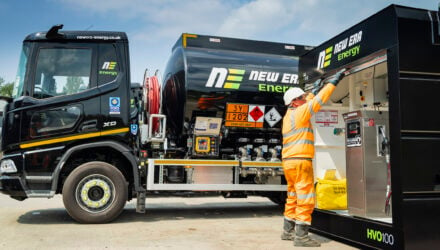
CBVC managing director, Mike Manners
Companies and their drivers are being urged to resist the temptation to repurpose car-derived vans into more car-like vehicles to try to make savings in Benefit-in-Kind (BIK) and vehicle taxation.
Burton upon Trent fleet management specialist, CBVC Vehicle Management, says that, although it may be tempting to repurpose vans so that they are capable of carrying passengers, there could be significant tax charges if the move falls foul of the taxman.
CBVC has been approached by clients on several occasions querying whether they can repurpose vans as passenger carrying vehicles without incurring additional tax charges.
On paper, the tax savings are extremely attractive. As a van, the vehicle qualifies for:
- full VAT recovery for outright purchases
- full recovery of VAT on lease rentals
- 100% offset of lease rentals against corporation tax
- BIK scale charge of £3,430 for a van with private use in the current tax year
- National Insurance Contributions (NIC) based on scale charge.
Based on the scale charge, a 20% tax paying driver would have a tax bill of just £686 per annum with £1,372 for a 40% tax payer. There is also a flat-rate van fuel benefit charge of £655 for the same tax year.
By comparison, a comparable company car will have a BIK tax bill many times greater than a van, with only 50% of the VAT on leasing rentals being recoverable and NIC paid on the vehicle’s full scale charge based on its PIID value.
As a result, some companies may be tempted to acquire a van and then repurpose it with rear seats, for example, while still claiming it as a van and paying the appropriate van tax rates.
CBVC managing director, Mike Manners, said: “We have been asked this question on several occasions, by companies running what are clearly car-derived vans.
“But then, perhaps in response to dealer advertising or the wrong advice, they have sought to retro-fit items, such as rear seats, to turn them into what in the eyes of HMRC would be passenger cars.”
Mr Manners cited the example of a Land Rover Discovery Commercial 2.0 SD4 HSE 240HP auto with a PIID value of £60,950 – quite clearly a car-derived van– but which a fleet client had been advised by a third party was perfectly fine to be repurposedwith removable seats.
“This advice is quite clearly incorrect,” said Mr Manners. “In this instance, there would be a very high risk of HMRC re-classifying the vehicle as a car, and then possibly backdating all the relevant taxes and costs involved.”
This, he said, could include recovery of costs such as:
- VAT
- Employers’ NIC
- Capital allowances
- Corporation tax offset of rentals
- BIK tax on vehicle and fuel
“Our calculations show that, in that event, the company acquiring the vehicle would face an extra £6,790 in year one in NIC, non-recoverable VAT, increased rental charges, road tax and DVLA fee.
“And the driver would face extra BIK charges as well. A 20% taxpayer would pay an extra £3,241 and a 40% driver would pay an extra £7,655. That’s an additional cost of over £14,000 in just one year,” he said.
HMRC has a strict set of criteria that qualify a vehicle as a light commercial or car-derived van rather than a passenger car.
HMRC classifies a vehicle as a van where:
- the rear seats, even easily removable ones, and seatbelts have been taken out, along with their mountings. it is not enough to merely cover them over or fill in holes with a non-metal cold substance, which can easily be removed later
- examples of suitable methods of disabling are welding up the boltholes or fitting bonded shear-bolts
- the rear area of the shell is fitted with a new floor panel to create a payload area
- the vehicle’s side windows to the rear of the driver’s seat have been made totally opaque
- the mechanism for raising and lowering the windows in the rear side doors, where applicable, has been disabled or removed.
Full details here: https://www.gov.uk/government/publications/car-derived-vans-and-dual-purpose-vehicles/car-derived-vans-and-dual-purpose-vehicles
“Thus modified, these vehicles clearly do not meet the first part of the definition of a passenger car as they are not “solely or mainly for the carriage of passengers”,” said Mike Manners.
“The HMRC code is quite strict. For example, a car-derived van where any side windows to the rear of the driver’s seat were fitted with clear glass would not qualify as a van for VAT purposes. To satisfy this criterion, HMRC insists that all side windows to the rear of the driver’s seat must be completely opaque.
“Our advice to our fleet customers is unequivocal. Never tamper with a van’s specification, even if you have been told that it is perfectly acceptable thing to do, unless you want to face the possibility of retrospective vehicle and tax charges. In all cases, talk to your fleet management specialist for advice,” he said.






